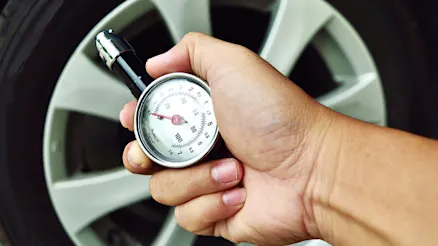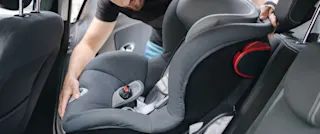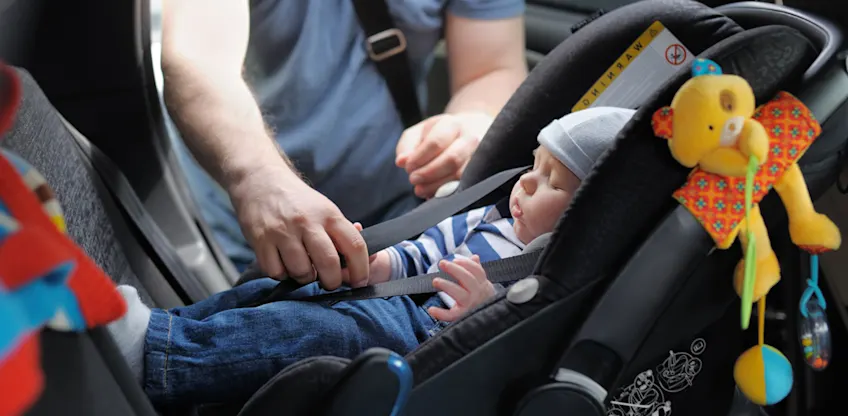
The importance of regularly checking your tyre pressure
Regularly checking your tyre pressure is crucial to your vehicle’s safety, fuel economy and optimal driving.


Regularly checking your tyre pressure is crucial to your vehicle’s safety, fuel economy and optimal driving.

Looking for the perfect gift for the car enthusiast in your life? Carma’s experts have you covered.

Find out which SUVs are best for your next family holiday adventure.
Child car seats are literal life-savers, but let’s face it – they’re also a bit of a festy Bermuda triangle where snacks are dropped and sweaty tantrums are had. On some level, doesn’t every parent look forward to their kids outgrowing their car seats?
So at what age can your child graduate to the grown-up seat instead? Well, both age and height need to be considered. That’s because kids grow at different rates, and a child's size and development determines how they’d best be protected in a crash.
By law, all children aged under seven years must use an approved and suitable child restraint when travelling in a vehicle.
The suggested minimum height for using a standard seatbelt is 145cm or taller. Why? That height requirement helps to ensure the seat belt won’t pull across the neck or the abdomen with sudden braking. Children who are too small to use a standard seatbelt should be using an approved booster seat or an anchored safety harness, even if they’re over seven years of age. Yep – that means some children could be using a booster seat until they’re 11 or 12.
So before you banish the booster seat to the back of the garage, check that your child is over seven years of age and over 1.45m tall. The seat belt should fit across their hips and chest, and shouldn’t be sitting across their neck or stomach.
The five-point test is an easy way to check a good fit. If you’re thinking of moving your child to a standard car seat, make sure they can do all of the following first:
Kids can technically sit in the front seat once they’re over seven years old – but it’s generally recommended that children are at least 12 years of age, as airbags can carry their own risks for young children. Kids should ride in the back seats whenever possible. If you do need to place an older child’s forward-facing car seat in the front seat, it’s recommended you move the seat back as far as possible to provide more distance from the airbag.
In vehicles where the cab has only one row of seats, children of any age can sit in the front seat as long as they’re appropriately restrained. However – regardless of the vehicle layout, children in rear-facing seats must not ever travel in the front seat if that seat has an airbag.
Some states and territories can have additional regulations, so always be sure to check with the appropriate transport authority for your location to get the latest rules.

The answer to this sometimes surprises parents – and we don’t blame them! While the law requires all babies up to six months of age to travel in a rear-facing child car seat, that doesn’t mean they should transition to a forward-facing car seat at six months and one day. Once more, height comes into it.
Under Australian standards, child car seats have height markers to indicate appropriate height. As a general guide you should only move your child to the next seat type once they no longer fit in their current child car seat – that is, once their shoulders reach above the maximum height line.
Now, here’s where the surprise comes in: safety experts and paediatricians alike have said that lots of children are moved to forward-facing seats before they really should be. In some cases, young children could be best in a rear-facing car seat until they’re two or even older.
In a nutshell: Children are likely to be safest remaining in their current restraint as long as they still fit in it. It really comes down to height and size for a safe ride.
There’s a mindboggling variety available, but the golden rule is: make sure the car seat or booster is appropriate for your child’s age and size, and that it has a Standards Approved Certification sticker on it. Retailers are required to sell child safety seats that meet the Australian/New Zealand Standard AS/NZS 1754.
Child restraints also must be correctly installed according to the manufacturer’s instructions. We know – fitting them can be a major hassle, but Kidsafe reported that a shocking 90% of child car seats they checked over one day hadn’t been installed or used correctly. If in doubt, it’s worth getting child restraints fitted by an authorised restraint fitter or at an authorised restraint fitting station. If your vehicle does happen to be involved in a crash, it could make all the difference.
Yep – installing and removing child car seats (and keeping them clean) can be a pain. But finding the perfect family car doesn’t need to be.
Carma has pre-checked SUVs and people movers aplenty, complete with a 3-month warranty for every vehicle. You can explore a wide range of nice family cars, from stylish Scandi hybrids to rugged offroaders.
Even better, you can get your new car delivered right to your door – so you won’t need to lug those car seats anywhere!